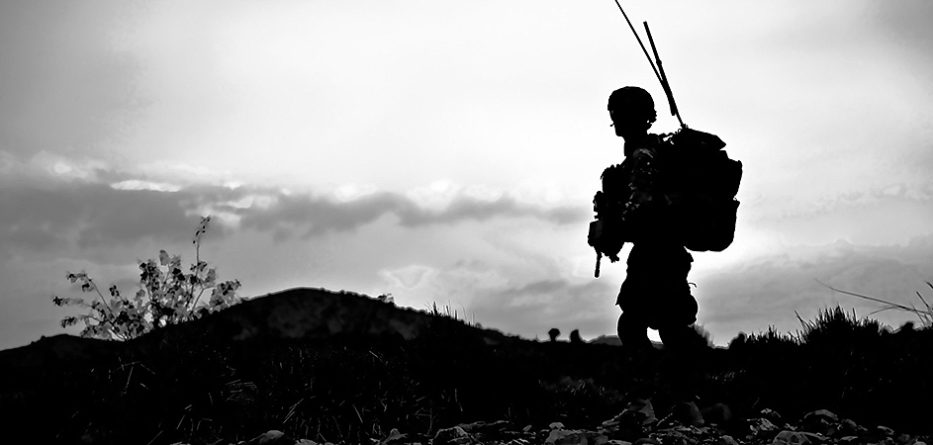Following the attacks of September 11, 2001, and the refusal of the Taliban to hand over Osama bin Laden, the United States of America invaded Afghanistan with the aim of putting an end to the Taliban regime and expelling al Qaeda from the territory. Within three months Kabul was conquered and a transition government, led by Hamid Karzai, was established. He then won the first presidential elections on October 9, 2004. Ashraf Ghani succeeded him. A considerable NATO contingent remained in the country and the operation “Resolute Support” was inaugurated, with the aim of forming a regular army able to face the Taliban guerrillas.
President Trump, with the signing of the Doha Agreement with the Taliban on February 29, 2020, decided to end the armed conflict in Afghanistan, ordering the total withdrawal of U.S. armed forces from the country by August 31, 2021. On April 14, 2021, NATO Secretary General Jens Stoltenberg, stated that the alliance had agreed to begin withdrawing its troops from Afghanistan by May 1. Shortly after the withdrawal began, the Taliban launched an offensive against the Afghan government, advancing rapidly with no resistance from the now dispirited government forces. On August 15, 2021, the Taliban began its occupation of the capital, and many civilians, government officials, and foreign diplomats were evacuated. President Ghani fled Afghanistan and the Taliban proclaimed the Islamic Emirate of Afghanistan.
How can we interpret the events that saw the rise of the Emirate? In this essay we will read the events from the US perspective, in order to better understand the decisions taken and what happened. The complexity of events requires further study: the strategic position of this country in the heart of Asia gives Afghanistan considerable geopolitical and strategic importance. Compared to the last two decades, Afghanistan will now see more involvement from its neighboring powers: China, Pakistan, Iran, Russia and Turkey.
A first key to our perspective is offered by Akbar Ahmed, a former governor of Waziristan, the Pakistani frontier territory well known for its fierce ungovernability. In The Thistle and the Drone, he argues that in the global war on terror the U.S. is waging a high-tech war against tribal Muslim societies at the edge of civilization.[1]
In 14 case studies, Ahmed examines the relation between the native tribes, the central government and the colonial or external power center in countries from Morocco to Afghanistan. Relying on military tactics, whether occupying force or drone warfare, and with extreme measures like rendition and torture, the U.S. has failed, Ahmed contends, to subdue tribal peoples.
In the 2,000-year history of religious conflict, the Taliban’s re-capture of Afghanistan and the American withdrawal are yet one more episode in the recurring clash between tribal and rural peoples, on the one hand, and metropolitan powers and centers of civilization , on the other.
Lessons to learn
The tribal nature of the Afghan war joins a list of factors the U.S., NATO and many others failed to appreciate in 20 years of war. John Sopko, the U.S. Special Inspector General for Afghanistan Reconstruction (SIGAR), in a report issued July 30, accused the U.S. political and military leaders of the failure to understand Afghanistan’s history and culture and of fashioning American solutions to fit an impoverished, landlocked country.[2]
In a telling survey of missteps, the SIGAR report declares: “The U.S. government also clumsily forced Western technocratic models onto Afghan economic institutions; trained security forces in advanced weapon systems they could not understand, much less maintain; imposed formal rule of law on a country that addressed 80 to 90 percent of its disputes through informal means; and often struggled to understand or mitigate the cultural and social barriers to supporting women and girls. Without this background knowledge, U.S. officials often empowered powerbrokers who preyed on the population or diverted U.S. assistance away from its intended recipients to enrich and empower themselves and their allies. Lack of knowledge at the local level meant projects intended to mitigate conflict often exacerbated it, and even inadvertently funded insurgents.”
Among the dysfunctional institutional habits, says the SIGAR report, were the rotation of military, diplomatic and aide personnel on short, at most three-year-long, cycles, and in the case of military personnel on the front lines a year or less, and “unrealistic timelines and expectations that prioritized spending quickly. These choices increased corruption and reduced the effectiveness of programs.”
The report quotes former George W. Bush National Security Adviser, Stephen Hadley: “We just don’t have a post-conflict stabilization model that works. Every time we have one of these things, it is a pick-up game. I don’t have confidence that if we did it again, we would do any better.”
Three key factors
Sarah Chayes, a veteran observer of recent Afghanistan history, regards corruption as one of three fundamental factors contributing to the Taliban resurgence.[3] She came to Afghanistan as a reporter for National Public Radio at the start of the war, stayed on to found two humanitarian development projects, and later advised two American military commanders and the Chairman of the Joint Chiefs of Staff. She names “Afghan government corruption and the U.S. role in enabling and reinforcing it” as the first cause of the collapse of the Ghani government.
The Afghanistan Papers, published in 2019, documented the long-standing problem with corruption, and Post journalist Craig Whitlock in his book-length study of the same name has traced the corrosive effects of corruption on the Afghan nation and the American cause.[4] Dexter Filkins, author of The Forever War, commented in the New Yorker podcast that corruption “produced a state whose leaders’ main objective was to get hold of as much foreign money as possible.” He stated, “The Afghan state, venal and predatory, became the main driver of Taliban recruitment.” American officials, he adds, “had a droll name for the phenomenon: vertically integrated criminal enterprise, or VICE.”[5]
The second factor Chayes identifies in the loss of Afghanistan is the putative U.S. ally, Pakistan. The Taliban were tutored by the Pakistani military intelligence service, ISI, and it continues to support them. Since 2002, writes Chayes, Pakistan’s ISI has “helped [the Taliban] to re-group, training and equipping its units, developing military strategy, saving key operatives when the U.S. had identified and targeted them.”
The supposed U.S.-Pakistan alliance is another instance of bureaucratic blindness and political perversity in the American system. The late Andy Marshall, a Washington legend, headed the Office of Net Assessment, a Pentagon think tank, for five decades, and was a close adviser to a series of defense secretaries. Foreign Policy has praised Marshall for “thinking way outside the Pentagon box.” In a 2004 meeting, aware of the Pakistani double game, I asked him why the Bush Administration had invaded Iraq, and not Pakistan, which according to open sources was the power behind the Taliban’s renewed resistance. He responded with obvious frustration, “That’s what I have been asking them. They won’t hear it.” Averting their eyes from Pakistani duplicity is another case of willful ignorance on the part of officials at the highest levels.
Will the Biden Administration continue to tolerate Pakistan’s double role? In many respects, the Biden foreign policy team maintain steady-as-she-goes, conventional attitudes. On Israel-Palestine, for example, while relating again to the Palestinian Authority and re-funding UNRWA, the aid agency for aid to Palestinian refugees, they have not reversed other Trump-era policies. With regard to the leading issue of this past summer, Israel’s dispossession of Palestinians from their homes in East Jerusalem, they failed to voice their strong opposition. Is the president ready, then, to grasp the nettle on Pakistan?
John Bolton, Trump’s national security adviser, reports that Biden as Barack Obama’s vice president observed that every one of Pakistan’s interests were also America’s interests.[6] Jane Perlez, however, in an analysis for the New York Times, believes that following the loss of Afghanistan, U.S. relations with Pakistan “already on the downslope will deteriorate further. Aside from maintaining the stability of Pakistan’s nuclear arsenal, the Americans now have less incentive to deal with Pakistan.”[7]
Finally, Chayes discloses a third elusive factor, the role of Afghanistan’s former president, Hamid Karzai, as the Taliban’s enabler. In 1994 Karzai had been the go-between who negotiated the Taliban’s entry into Afghanistan. Karzai’s own father broke with him over this plot. After the fall of the Afghan government in August, Karzai reportedly is one of three principals negotiating the creation of a coalition government. Plus ça change, plus c’est la même chose.
People wonder how and why the country fell in a mere 10 days. In an interview with PBS Newshour, August 20, Chayes ventured the theory that provincial capitals surrendered with only minimal resistance because Karzai had already coordinated with tribal and regional leaders to forego further fighting as the U.S. withdrew with an eye toward building a post-American coalition government. How did the intelligence analysts miss that?
From Trump to Biden
The Washington Post’s Michael Gerson suggests Joe Biden is following in the wake of Donald Trump. In addition to a shared desire to withdraw troops from Afghanistan, they also both hold to an America First agenda, putting American interests ahead of humanitarian concerns. Biden had the foreign policy experience standing to insist on implementing Trump’s exit deal.[8] Instead, contesting the whole withdrawal policy, Gerson asserts, extending the U.S. commitment to Afghanistan “would have been the wise, sustainable, realistic use of U.S. resources to avoid disaster.”
It is clear that the rapidity of the Taliban takeover took the Biden Administration by surprise. Peter Baker, reporting in the New York Times, August 29, reports that the decision-making process that led to the withdrawal consisted of 10 meetings of department deputies, three meetings of cabinet members, and four meetings in the Situation Room with the president.[9] Even when the fall of Kabul seemed inevitable, moreover, experts inside and outside government projected there would still be weeks to evacuate Americans and to extract U.S. allies, co-workers and other vulnerable Afghanis.
Despite having to backtrack on its overconfident claims, the U.S. administration needs to be credited, once the evacuation crisis unfolded, with responding in strength and with inventiveness as new bottlenecks arose. It employed helicopters to bring potential evacuees trapped in Kabul to the airport, getting them out of the country; it erected a network of transit and reception centers around the globe; requisitioned civilian airliners to increase the evacuation fleet, and worked closely with news agencies to evacuate their staffers from the country. In addition, it has maintained channels of communication with the Taliban, both in Doha and on the ground in Kabul, winning collaboration to prevent the crisis from growing worse, and rescuing some isolated Americans and allies.
The unscheduled meeting of CIA Director William Burns, a distinguished U.S. diplomat, with Mullah Abdul Ghani Baradar, the Taliban leader in Kabul, was a clear sign of its willingness to engage with the Taliban, even perhaps to maintain relations with the emerging Taliban state. According to a National Public Radio report, August 28, U.S. officials have been dealing with Baradar since they prevailed upon the Pakistanis to release him in 2017.[10] If the relationship extends back that far, then perhaps the opportunity to build relationships to meet humanitarian demands and even support human rights may be more possible than the administration’s critics have imagined.
Late in the evacuation, media also reported that the CIA, in its own operations, was extracting people from Kabul and elsewhere. In separate remarks both the president and Secretary of State, Anthony Blinken, announced that the U.S. was coordinating with other countries to facilitate the emigration of Afghans to new homes after the military airlift ended. Both indicated the U.S. would be using other than military means to assist these evacuations, suggesting perhaps that Burns’ CIA may be staying on and perhaps even expanding its operation in the Taliban’s Afghanistan.
All the same, the flawed exodus damaged the administration’s reputation as a competent team of problem-solvers, and the ISIS-K bombings brought the single greatest loss of American military in a decade. With reason the Washington Post headlined a column on the chaotic evacuation by David Ignatius: “A tinge of tarnish for Biden’s best and brightest.”
The crisis has linked the Trump and Biden administrations together in their common intention to withdraw troops from the Forever War and specifically in their determination to abide by the toothless agreement Zalmay Khalilzad negotiated with the Taliban. Under its terms, U.S. forces were to leave by early September 11 in return for a ceasefire by the Taliban and its good-faith negotiations for a transitional government with the Ghani regime. It proved to be a trap for the Biden Administration, and the president’s impatience led him into it. Long opposed to the war, frustrated by the Obama Administration’s uncertain direction on the issue, President Biden announced a U.S. withdrawal would take place weeks in advance of the September 11 deadline.
Meanwhile, in Doha the Taliban was meeting but not negotiating with the Ghani government; they shirked the commitment to a ceasefire, as they continued instead to gain ground throughout the country. Neither did the U.S. administration do anything to hold the Taliban accountable. Now, it appears, if Sarah Chayes is correct, that, with the assistance of Karzai, as the American forces drew down, the Taliban were dealing with local warlords and tribal leaders to facilitate a rapid re-occupation of the country.
Politicians and the media have been outspoken and critical in their commentary on the American withdrawal. Beyond faulting the apparent lack of planning for the traumas of the post-withdrawal period, most have complained about the apparent absence of Biden’s trademark empathy for those caught at the last minute in the Taliban’s grip. There are genuine worries about human rights under Taliban rule and especially the rights of women.
Forced to defend his policy, Biden stood by his plan and failed for a few days to voice concern for the embattled Afghans. In the months ahead, the Biden National Security Council will be scrambling to articulate how they will make good on their commitments to human rights and democratization. An international conference the president has called for December on democracy may be the occasion for the release of a new, post-Afghan Biden doctrine.
A betrayal?
As to the charge that withdrawal was a betrayal of the Afghan people, it is illuminating to reflect on what philosopher Michael Walzer, the leading just-war theorist of our times, calls the principle of self-help. Drawing on the thought of John Stuart Mill, he asserts that “the members of a political community must seek their own freedom, just as an individual must cultivate his own virtue.” He explains, “The (internal) freedom of a political community can be won only by the members of that community.”[11] If self-help is the natural condition of communal liberty, then no outside intervention can substitute for internal struggle. For that reason, President Biden was correct in asserting that Americans ought not to die for a cause for which the Afghan army declined to fight.
Of course, real-world conflicts are not as straightforward as philosophers’ model cases. The U.S. did not enter Afghanistan to intervene in an internal Afghan conflict. It invaded Afghan territory in an act of self-defense against Al Qaeda. Having done so, it found itself as an occupying power in a country where the ruling Taliban had fled, leaving behind the scattered bones of a failed state.
While the U.S. took many initiatives to ameliorate and strengthen Afghan society and transformed parts of it into a facsimile of a modern society, it never embraced nation-building, because domestic U.S. politics would not allow it. Indeed, though there was reconstruction and development aid, the civilian investment in Afghanistan was dwarfed by the military expenditure. While many Afghans came to admire western liberal values, Afghan civil society never became strong enough to challenge the politicians, tribal warlords and jihadists for political supremacy.
The collapse of the Afghan National Army and the flight of President Ghani were evidence that the Afghans would not struggle for their own liberty. It was the last act in a 20-year-long tragedy. Nonetheless, if after so many years the Afghans could not organize to win their liberty in a struggle against corrupt politicians, craven generals and Pashtun jihadists, then, regrettable as it is, President Biden could find a justification to declare the end of the American engagement, while mourning the loss of human rights and freedom by so many.
Wisdom teaches that force seldom achieves justice, and justice in warfare demands disengagement from an unwinnable war. The hope for a democratic Afghanistan where its citizens, and especially women, will enjoy their human rights should not die with the American departure. It can remain alive, and the cause can be won with better means in another time by Afghans themselves.[12]
A humanitarian emergency
Even as the mass exodus from Afghanistan by air was underway, the United Nations prepared to warn of a complex humanitarian emergency in the country. In an internal document, the UN World Food Program projected “[a] humanitarian crisis of incredible proportions … with drought and Covid-19 pushing the people of Afghanistan into a humanitarian catastrophe.”[13] The WFP estimates it will require $200 million immediately to pre-position food aid by October to feed 9 million Afghans per month over the winter.
According to New York University’s Barnet Rubin, the destructive potential of the crisis will be greatly augmented by the curbs donor nations have placed on aid to the Taliban-led government and the financial controls donor states have imposed on Afghanistan’s international reserves. In recent years, Just War analysts increasingly hold that intervening states bear post-war obligations to the citizens of states in which they have been militarily involved. While no more foreigners may be asked to die in defense of Afghanistan, the U.S. and its NATO allies still have post bellum humanitarian duties to prevent vulnerable populations from suffering starvation and illness in the wake of the withdrawal. So, while direct obligations stemming from the foreign military presence may no longer hold, humanitarian duties still obtain.
It will take time, no doubt, to sort out what those specific obligations are, and which, of the many demands, will receive priority. Among moral theologians, philosophers, international lawyers and activists, articulation of post bellum duties is rather new, elaborated mostly since the invasion of Iraq in 2003. In the face of imminent crisis, political acceptance of these duties may come more quickly than in less pressing times and in situations where there has been less involvement. UN agencies, like the WHO, already working in Afghanistan may be expected to take the lead. In the U.S. and the West generally civil society with its extensive humanitarian sector and competent entrepreneurs can be expected to take the lead.
After the Vietnam War, the late Senator John McCain and then Senator John Kerry, both veterans of the war, and McCain a POW for five years, took the lead in providing prostheses to victims of that war, and then led the way to normalization of relations between the two former enemies. Already Akbar Ahmed, the theorist of Islamic tribalism, writing in the National Interest, has called for the U.S. to return to Afghanistan in the humanitarian cause. “America must do what it does best,” he writes, “it needs to lead a coalition to help rebuild Afghanistan. But this time, it should arrive in the land with plans for schools, colleges, and development schemes, not missiles and drones.”[14]
In a positive move, in the last days of the U.S. military presence in Afghanistan, the Biden administration already announced that it will continue humanitarian aid to Afghanistan, though details were not released. With Samantha Power, the former UN ambassador who made a reputation in human rights advocacy, as director of the U.S. Agency for International Development, we might expect a thoughtful and creative approach to U.S. humanitarian aid by the Biden Administration. But, though she holds cabinet rank, Power has not yet had much of a profile in the Biden government. Her re-appearance as a public figure may prove to be a measure of the seriousness of the administration’s purpose in meeting Afghans’ human needs.
***
In any case, today more than ever, the counsel of Pope John Paul II must be heard: “A leadership role among nations can only be justified by the possibility and willingness to contribute widely and generously to the common good.”[15] Chastened by loss and recognizing our kinship with all humanity, especially tribal peoples, even hostile ones, perhaps we can walk the path of social friendship traced by Pope Francis in Fratelli Tutti.[16]
Drew Christiansen, SJ, is former editor of America, Distinguished Professor of Ethics and Human Development at Georgetown University and a senior scholar with the Berkley Center for Religion, Peace and World Affairs. He is an international correspondent for this journal.
Reproduced with permission from La Civiltà Cattolica and Drew Christiansen SJ, where this article originally appeared.
DOI: La Civiltà Cattolica, En. Ed. Vol. 5, no.10 art.6, 1021: 10.32009/22072446.1021.6
[1] A. Ahmed, The Thistle and the Drone: How America’s War on Terror Became a Global War on Tribal Islam, Washington, D.C., Brookings, 2013.
[2] Special Inspector General for Afghanistan Reconstruction, What We Need to Learn: Lessons from Twenty Years of Afghanistan Reconstruction, August 2021 (www.sigar.mil/interactive-reports/what-we-need-to-learn/index.html).
[3] See S. Chayes, “Ides of August”, August 16, 2021 (www.sarahchayes.org/post/the-ides-of-august).
[4] See C. Whitlock, The Afghanistan Papers: The Secret History of the War, New York – London – Toronto – Sydney – New Delhi, Simon and Shuster, 2021.
[5] See Filkins, “The Fall of Afghanistan”, in The New Yorker Radio Podcast (www.newyorker.com/podcast/political-scene/dexter-filkins-on-the-fall-of-afghanistan), August 20, 2021.
[6] Bolton, “Kabul’s Fall Poses a Risk”, in The Washington Post, August 24, 2021. Bolton cites as his source George Packer’s biography of the American diplomat Richard Holbrooke, Our Man: Richard Holbrooke and the End of the American Century, New York, Alfred A. Knopf, 2019.
[7] J. Perlez, “Pakistan has a Future Riding on the Taliban”, in The New York Times, August 28, 2021.
[8] See M. Gerson, “Biden’s Choice to Follow through on Trump’s Withdrawal from Afghanistan” in The Washington Post, (www.washingtonpost.com/opinions/2021/08/16/trump-afghanistan-withdrawal-biden-catastrophe) August 16, 2021.
[9] P. Baker, “Biden Saw Afghan Choice As Either All In or All Out”, in The New York Times, (https://www.nytimes.com/2021/08/28/us/politics/trump-taliban-biden-afghanistan.html) August 29, 2021.
[10] See/Hear the report, “What We Know about Abdul Ghani Baradar, New Taliban Leader”, in National Public Radio (www.npr.org/2021/08/28/1031965194/what-we-know-about-mullah-abdul-ghani-baradar-new-taliban-leader).
[11] On self-help, see M. Walzer, Just and Unjust Wars: A Moral Argument with Historical Illustrations, Harper, 1977, 87-91.
[12] Though I would suggest that the Just War principles of proportionality and prospect of success support disengagement, that rationale does not mean that no moral obligations continue to bind Americans to Afghans. Whatever those duties may be, they will need to be pursued with other, primarily nonviolent means, though possibly with limited military protection.
[13] On the impending humanitarian crisis, see B. Rubin, “Afghanistan is facing a vast humanitarian disaster”, in The Washington Post, (www.washingtonpost.com/opinions/2021/08/24/afghanistan-is-facing-vast-humanitarian-disaster-not-only-airport/), August 25, 2021.
[14] A. Ahmed, “America Got Afghanistan Wrong, But It Can Still Make Things Right”, in The National Interest (nationalinterest.org/feature/america-got-afghanistan-wrong-it-can-still-make-things-right-192296), August 22, 2021.
[15] John Paul II, Sollicitudo Rei Socialis (On Social Concern), No. 23.
[16] Francis, Fratelli Tutti (“On Fraternity and Social Friendship”, especially Nos. 176-182.








